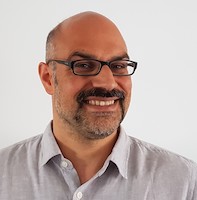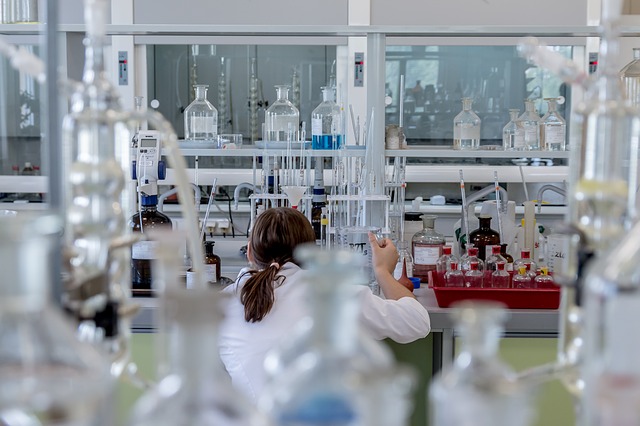May 29, 2020
By Michelle Pelletier Marshall, Global AgInvesting Media
Agtech startup OSPIN GmbH, based in Berlin, is an automation and control technology provider for those in food and biotech firms. And while its products serve a wide array of industries – cell therapy, R&D, and automation to name a few – it is their contribution to the creation of cultured (“clean”) meat that caught our attention.
Founded in 2014 by Dr. Jan Saam, CEO, who has worked closely on the company vision with CTO Dr. Nina Buffi, the company first focused on research applications in the tissue engineering space and later expanded its operational range into other fields, which in 2018 included opportunities in cultured meat. Here, their environmental and ethical concerns in meeting the needs of rising worldwide consumption of meat had them look at their bioreactors in a new light. Driven by their backgrounds in biology and engineering – Saam has a Ph.D. in biophysics, and Buffi a Ph.D. in microsystems and microelectronics – the pair has worked tirelessly to develop a device-agnostic and cloud-based technology platform that automates and digitizes bioprocesses.
With a focus on an inter-connective and cloud-computing approach, OSPIN expects to revolutionize and accelerate the biotechnology world by offering a bioprocessing operative system that enables automation and a scaling up of any biological process. This in turn will take those in the ag sector posed to excel in clean meat initiatives on a path to success.
GAI News spoke to Saam and Buffi to get more details about OSPIN’s contributions to feeding the world.
1). At OSPIN you create functional blocks combining hardware, firmware, and software, which can then be combined into tailor-made solutions for bioprocessing. How does this work in the creation of clean meat?
Nina Buffi: The technology needed to automate cultured meat production is under development. Obviously, bioreactors exist out there, but they were developed for other industries and applications, and they are not suitable for cultured meat bioprocesses. The key here is that the technology needs to be adapted to the biology and not vice-versa, otherwise bioprocesses will never be optimized, and we will never reach the point where cultured meat costs are affordable. That’s why OSPIN’s bioreactors, which can be tailored exactly to the bioprocess requirements, are, in our opinion, a unique tool for the development of cultured meat bioprocesses and, later, for cultured meat production.
2). What is the connected-lab cloud concept that you speak of, and how will this shape the cultured meat field/bioprocessing world?
NB: With a cloud approach, lab devices can be interconnected and work together, as if they were one single device, allowing you to think about your process as a whole and not as pieces that don’t fit together completely. This, however, is only one of the features offered by IoTs. I think the biggest plus of a cloud approach is that it allows digital business models. Imagine you are a cultured meat company and you figure out a bioprocess that allows you to produce cultured meat in bioreactors at an affordable cost. In order to produce large amounts of meat you would have to invest a lot of money in equipment – money that you don’t necessarily have. However, if your bioprocess is a digital recipe that you can license to others – and this licensing process is as easy as sharing a picture with your smartphone – then you have another possibility. Farmers can buy the equipment necessary to run your bioprocess, and your bioprocess (and your cells) can be licensed to them with one click. So, you make money without needing a huge machinery investment, farmers make money, and OSPIN makes money. We would call this a win-win-win situation that is only possible with a cloud approach.
3). Jan, you have said that one of your main scientific interests is oxygen migration pathways in proteins. Was this a catalyst to your systems being used in proteins for consumption, i.e., clean meat?
Jan Saam: The scientific question itself has no connection to bioprocessing or food proteins – the proteins I was studying are enzymes involved in metabolic and regulatory processes in the cell and make up only a tiny fraction of the protein mass. However, the methods I employed back then paved the way for me: using computer simulations I studied functional principles of proteins on a molecular level. The work involved a lot of programming to develop my own tools as well as visualizing complex data. Over time I became more fascinated with creating tools that simplify and facilitate scientific and engineering work. Today, with OSPIN’s technology platform I still strive to develop valuable tools that enable our customers to achieve goals that would be impossible to reach without our solutions.
4). There are many benefits to cultured meat vs. traditional – 99 percent less land use, 96 percent water use, and substantial reductions in CO2 emissions. What led you down the path to use your product to aid in the production of this up-and-coming food source?
NB: I first read about cultured meat in newspapers, about two years ago, and I thought “that’s something that could revolutionize the food world”. However, at that point it was difficult to estimate the growth of the sector. On cultured meat company websites and newspapers, it looked like we were in line to be served cultured meat in restaurants, but some insiders told me we were far from that point. A few months later we decided to participate in a cultured meat conference in Maastricht, in the Netherlands, to learn more, and there we confirmed that cultured meat companies were actually still facing similar problems as the research groups and companies we were already working with in other fields, such as: how to automate a manual process? how to control it? and how to scale it up?
JS: I already heard about cultured meat in the very early days of OSPIN and was immediately fascinated by the idea. The environmental aspect played a role of course, but I also saw cultured meat as a very interesting cell culture problem that I wanted to participate in solving. Back then I was quite focused on tissue engineering, and I have to admit that initially I also dreamed about building kitchen appliances in which you could grow your own steak. Obviously, after I gave it some thought, I realized that cultured meat is more about serving a mass market with valuable protein. And it became clear to me that it is mostly a bioprocessing challenge. Despite the similarities to existing large scale bioprocesses in the biomedical space, there are many different challenges that require new approaches. For instance, the need to reduce the production costs by orders of magnitude necessitates a recycling strategy for the cell culture media in order to recover valuable ingredients. Further, in the production of vaccines or antibodies, we harvest the molecules the cells make for us while we keep the cells. In cultured meat the cells are the product, and when we harvest them we remove the very source for new cells. These and other peculiarities of cultured meat have serious consequences on how we have to design and run the bioprocess in order to produce in an economically and ecologically sustainable way.
5). Do you have clients who are using your product for cultured meat processing? What has been the outcome?
NB: Four cultured meat companies, both in Europe and in USA, are currently using our technology, but they are still in the development phase and a quantitative outcome won’t be available for a few years. However, I would like to stress the fact that they have a technology that can evolve and adapt to their bioprocesses, from the R&D phase – where they are now – up to the industrial phase – their goal.
JS: We have clients that value automated, intelligent process control. Together with them we are designing and optimizing their bioprocesses and strategies for growth. Obviously we have to keep the outcomes confidential. Through the work we have learned a great deal about cultured meat bioprocesses, allowing us to develop a computational model for cultured meat that will estimate the feasibility of the business model based on the key properties of the bioprocess.
6) Are there any investment opportunities with OSPIN? If so, what are the details of these?
Both: Yes, there are. We know exactly what needs to be done on a technology level to automate, optimize, and scale a cultured meat bioprocess, and an investment would allow us to make the best use of the conceptual and technological advances we have compared to other tech companies, as well as be quicker in realizing one of the first production plants. More concretely, there are important questions that need to be worked out at a small scale before reaching the production phase, such as media recycling, feeding strategies, and full bioprocess automation – and OSPIN can provide tools to answer them. Later, our scale agnostic technology will allow a smooth route towards larger volumes. Investing in OSPIN offers a low risk yet high gain opportunity. As technology enablers for bioprocessing, we are at the heart of what cultured meat companies do and we will facilitate their breakthrough. Their success is going to be our success, but at the same time, by working with many of them, we are not dependent on the achievements of one single company.
ABOUT THE INTERVIEWEES
 Jan Saam is CEO of OSPIN GmbH. He studied biophysics and obtained his Ph.D. in 2007 from the Humboldt University of Berlin. After a few years dedicated to simulating the complex dynamics of biomolecules on super computers, he worked as product designer in the software industry and later as innovation manager in a biomedical think tank in Berlin, where he became interested in tissue engineering. In 2014 he founded OSPIN, a company offering customized technology to automate, digitize, and scale up bioprocesses in the fields of tissue engineering, cultured meat and cell-therapy.
Jan Saam is CEO of OSPIN GmbH. He studied biophysics and obtained his Ph.D. in 2007 from the Humboldt University of Berlin. After a few years dedicated to simulating the complex dynamics of biomolecules on super computers, he worked as product designer in the software industry and later as innovation manager in a biomedical think tank in Berlin, where he became interested in tissue engineering. In 2014 he founded OSPIN, a company offering customized technology to automate, digitize, and scale up bioprocesses in the fields of tissue engineering, cultured meat and cell-therapy.
 Nina Buffi is chief technology officer (CTO) of OSPIN GmbH. She obtained her master’s degree in Biomedical Microengineering from the Swiss Institute of Technology Lausanne in 2009, with a thesis on impedance cell spectroscopy. In 2013 she earned a Ph.D. in Microsystems and Microelectronics, also from the Swiss Institute of Technology Lausanne. Fascinated by combining engineering with biology, Buffi joined OSPIN in 2016. Together with Saam and her team she seeks to establish the OSPIN bioprocessing platform as the “operating system“ of modern biotechnology.
Nina Buffi is chief technology officer (CTO) of OSPIN GmbH. She obtained her master’s degree in Biomedical Microengineering from the Swiss Institute of Technology Lausanne in 2009, with a thesis on impedance cell spectroscopy. In 2013 she earned a Ph.D. in Microsystems and Microelectronics, also from the Swiss Institute of Technology Lausanne. Fascinated by combining engineering with biology, Buffi joined OSPIN in 2016. Together with Saam and her team she seeks to establish the OSPIN bioprocessing platform as the “operating system“ of modern biotechnology.
~ Michelle Pelletier Marshall is managing editor for HighQuest Group’s Global AgInvesting’s GAI Gazette magazine and its WIA Today blog, as well as a contributor to GAI News and the Oilseed & Grain News. She can be reached at mmarshall@highquestgroup.com.

Let GAI News inform your engagement in the agriculture sector.
GAI News provides crucial and timely news and insight to help you stay ahead of critical agricultural trends through free delivery of two weekly newsletters, Ag Investing Weekly and AgTech Intel.




